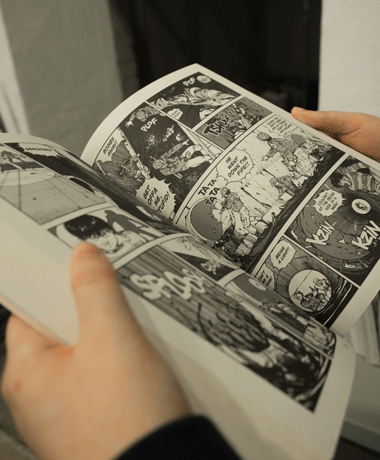We all love stories. We’re born with the innate talent for telling them, we listen to them intently before we go to sleep from a young age and we learn who we are through them. We connect through stories.
Storytelling has always been a way for brands to communicate with their audiences. As time goes by and technology evolves the art of brand storytelling needs to change. Micro-storytelling allows content to be short and concise, focusing on what is truly important, connecting with the audience directly through stories.
What is micro-storytelling?
Micro-storytelling does not rely on one big idea, rather it shares smaller ideas that may be on offshoot of the general brand message. The micro-storytelling approach leaves room for communications to feed into a wide range of subjects, rather than pursuing a rigid, inflexible emphasis on a single topic or theme.
According to Tricia Nichols, Estee Lauder’s VP of global consumer marketing and engagement, “It’s smaller, more frequent narratives that will deepen connections and create bonds with people.”
The idea of micro-storytelling is nothing new. Cave paintings are the perfect example of someone trying to communicate a complex storyline in a quick, easy-to-unde rstand format. Creative writers have been embracing “flash” fiction as a way to hone their skills and be more efficient with their narrative structure and language. But the one thing that’s done the most to bring the art of micro-storytelling to the forefront is the internet.
rstand format. Creative writers have been embracing “flash” fiction as a way to hone their skills and be more efficient with their narrative structure and language. But the one thing that’s done the most to bring the art of micro-storytelling to the forefront is the internet.
Micro-storytelling in action
The king of micro-storytelling is Twitter. At first the site was attacked for the limited amount of characters it gave users to share their thoughts and opinions, but this self-imposed limitation was actually the primary reason it became so popular. Twitter reduced the amount of effort it took to share your thoughts and stay informed even more.
With the shortening or our attention spans and the sheer amount of information that we are being asked to consume each day, micro-storytelling only gains momentum. With that in mind, whether you’re tweeting, blogging, sending press releases or email newsletters, or any other form of public-facing messaging, these tips will help you to tighten up your story so that you have a better chance of getting your micro-story to resonate.
Make every word count.
Delete any word that doesn’t actively contribute to the message you’re trying to deliver. Delete redundant modifiers, use contractions where appropriate, use shorter, simpler words and always use the active instead of the passive voice.
Take advantage of the Zeigarnik effect
People are hardwired to want to complete what they start. In 1927, Russian psychologist Dr Z

eigarnik discovered that the brain feels uncomfortable when left with a cliff-hanger. By leaving out the conclusion, you are not only shortening your message, you are encouraging your audience to engage with your brand.
Avoid jargon
Every word should serve to clarify, not obscure. While it may be tempting to use the latest business buzzwords to make your message sound hip and relevant they actually end up confusing your audience.
Leave out key facts
By leaving out key facts, you engage the reader in the storytelling process by asking them to fill in the blanks using their own experience.
This grabs your audience’s attention, making them feel part of the story. This ensures that your micro-story resonants with them and increases the chance of them returning to your brand time and time again.
Here at All Good Tales, we believe that storytelling can help your business succeed. We’ve worked with the likes of Ancestry.com, Failte Ireland and DAA to help them tell their story. We’d love to help you with a free consultation. You can call Gaye on (01) 254 1845 to organise yours today. Alternatively, you can get in touch here.
